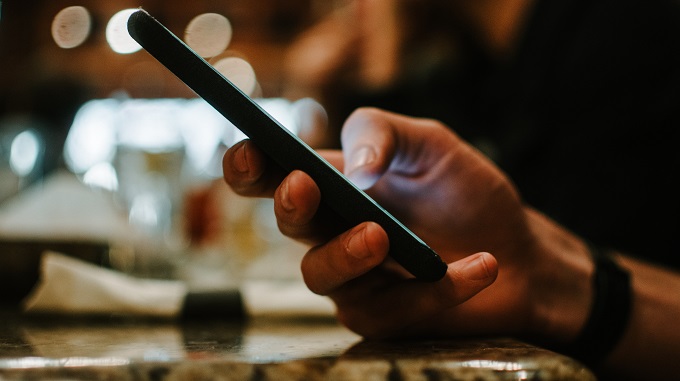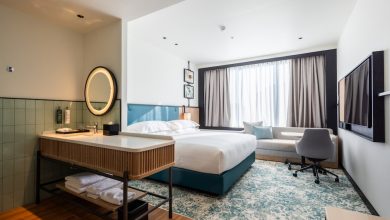
Op-Ed: Maximize sales via textual communications
The majority of sales conversations are now taking place via textual communication
When you look at most hotel sales training programs and articles these days, the focus is almost exclusively on how to sell during in-person meetings and phone conversations.
However, the majority of sales conversations are taking place via textual communications. Of course, training such as we do at KTN should encourage salespeople to reply to textual inquiries with meeting requests, video emails, and personalized voicemails.
Yet even if you can speak with a buyer, it is necessary to follow up in writing so they can pass it along to other decision-makers.
Therefore, make sure your sales and even guest services training focuses on how to sell by way of written words. Here are some of the ways in which the lodging industry uses textual communications:
- Responding to inquiries that arrive by way of platforms such as CVENT, The Knot, or the local CVB/DMO.
- Fielding inquiries that come in by direct email such as [email protected] or [email protected]
- Answering questions on OTA platforms (AirBnB, VRBO, Expedia, and Booking.com).
- Replying to questions and inquiries that come in by chat.
- Using email as a proactive follow-up tool after conversations.
Some readers may be asking, “Is it really worth it to invest in training focusing on textual inquiries?”
So you may want to first consider the hidden costs of getting prospective guests to initiate a textual inquiry.
If the prospects inquire by way of the platforms referenced above, chances are that your hotel is paying extra for a sponsored listing or preferred placement. If the inquiry is coming in via an OTA, there is a distribution cost for being present there. If the email or chat message arrives directly, odds are that the sender found you by way of an Internet search and website visit.
Therefore, costs of getting written inquiries may include:
- SEO – Organic & paid. Website development, maintenance, and hosting costs.
- Email campaigns.
- OTA “channel” costs.
Hotel leaders should take some time to review a random selection of the messages that are coming in by way of the various methods listed herein.
Certainly, one will see numerous sales inquiries that are directly stated as such, but if you look even closer, it is easy to recognize that many leads are disguised within other inbound messages, such as those that begin with: “I just have a quick question about…”
- Check-in times.
- Pandemic era questions (What’s open? Cleaning?)
- Pets.
- Parking.
- Bedding.
Consider: why would prospective guests be asking these questions if they did not have intent to buy?
If you take time to also look at the messages your staff is sending back in response to these types of questions, you will probably find that too many only send back a brief, polite reply that simply answers what was asked. Similarly, if you look at the responses being sent to directly stated sales inquiries, you will probably find that your team simply replies with a template, and often not the one from your list of templates that best fits the nature of the inquiry.
Here are some training tips from our new KTN sales training program called Maximizing Sales Through Textual Communications:
- When senders simply type over a quick question in a chat, email, or in-app message, after answering the question, be sure to always add remarks such as: “Let us know what other questions you have or what else we can do on our end to host you…”
- When replying to sales inquiries, first take a moment to introduce yourself as a “real person,” not an anonymous sender. If you are on-site or in-house, be sure to mention that. Include headshots, direct phone lines, and direct emails in auto-signatures, assuming the platform allows such.
- It is fine to use templates, but provide your team with a selection so they can select the one that best fits the inquiry.
- Start emails by paraphrasing, restating, and commenting on whatever you have learned from the conversation – if you had one – or from the sender’s written inquiry. Many senders self-reveal quite a few details in the “comments/remarks” boxes. The rest of the responsive message can be inserted from a template.
- For inquiries relating to groups, local corporate accounts, and/or events, include a link to an online scheduling app such as Calendly, making it easy for the sender to set a time to talk.
- For inquiries that represent significant enough potential revenue, include a short, personalized video email message in which you speak directly to the sender.
Again, for higher-revenue leads, leave the next step on your to-do list by saying “I will be following up with you in a few days to see what questions you have.”
For OTA’s and group booking platforms that restrict replies to being in-app by not revealing the sender’s email, create a trace system to help salespeople track leads for follow-up within the platform.
End with a personalized welcoming phrase such as “Let us know what else we can do on our end to secure the opportunity to welcome you…”
Doug Kennedy is president of the Kennedy Training Network. Doug’s articles are originally published in www.HotelNewsNow.com” and AccomNews shares them with permission.
Doug is a leading provider of hotel sales, guest service, reservations, and front desk training programs and telephone mystery shopping services for the lodging and hospitality industry. He continues to be a fixture on the industry’s conference circuit for hotel companies, brands and associations. Since 1996, Doug’s monthly training articles have been published worldwide, making him one of the most widely read hospitality industry authorities.







